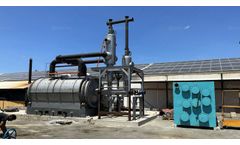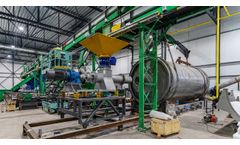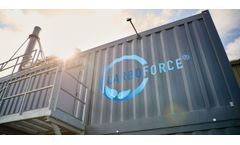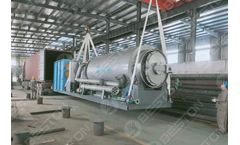Refine by
Incinerator Articles & Analysis: Older
293 news found
The 8th Waste Management & Waste to Energy Asia Summit was successfully held in Bangkok, Thailand from June 26th to June 28th. And JONO Enviro is also honored to participate this ...
In the past, the converter paid for the disposal of their rubber waste, which often ended in landfills or was incinerated. Click here to read the full ...
#Incineration #compliance in the EU is crucial for #waste #management #professionals and #environmental #agencies. It involves meeting regulations for residence times, interlocks, and safety measures. Understanding EU incineration #compliance #regulations To ensure EU incineration compliance, understand the regulations to assess your ...
Their team of experts has extensive knowledge and experience in servicing cremators and incinerators, ensuring that your equipment receives the utmost #care and #attention. ...
Rotary incinerators have emerged as a leading technology in this field, offering numerous advantages over traditional incineration methods. ...
In addition to the environmental benefits of waste-to-energy incineration plants, these facilities also positively impact local economies by creating job opportunities. ...
Here are some common misconceptions and concerns related to waste to energy incineration plants: Incineration's environmental impact is a concern due to harmful emissions released into the atmosphere. ...
The advantages of waste to energy incineration plants are numerous, from reducing landfill waste to generating electricity. Waste to energy incineration plants offer incredible advantages in terms of waste reduction, energy production, and public health outcomes. ...
When it comes to designing and operating #incinerators, one crucial factor that is often overlooked is the choice of #refractory #materials. ...
Small reliable mobile waste incinerators have emerged as a #revolutionary solution to the ongoing waste disposal challenges faced by communities. These compact incinerators, such as the Allburn 3, offer a promising way to manage waste. ...
In this article, we will explore the environmental protection fields where high alumina bricks are commonly employed, contributing to sustainable practices and shielding the environment. Waste Incineration Plants High alumina bricks are widely utilised in waste incineration plants owing to their excellent thermal resistance and resistance to chemical attack. ...
When it pertains to the construction of industrial incinerators, one element reigns supreme - the selection of fire bricks. ...
The selection of refractory bricks for such kilns assumes utmost importance, as they bear direct influence on the kiln's performance and longevity.Rotary Kilns for Waste IncinerationRotary kilns find common employment in waste incineration plants, ensuring the safe and efficient disposal of hazardous waste materials. ...
Rotary kilns play a pivotal role in various industries, including cement, lime production, iron ore pelletisation, waste incineration, and more. These cylindrical furnaces, lined with refractory stones and slightly tilted, continuously process materials as they rotate. ...
ByLAND®
Incinerators play an important role in waste management by converting various types of waste into energy or reducing them to harmless substances. In such a high temperature environment, incinerator refractory bricks play an important role in maintaining thermal efficiency and durability. ...
This innovative technology stands out for its high efficiency in transforming waste into useful end products, thereby minimizing the burden on landfill sites and incineration plants. Through the pyrolysis process, waste materials are subjected to controlled heating in the absence of oxygen, preventing complete combustion and resulting in a cleaner conversion. This characteristic ...
Reduction of Greenhouse Gas Emissions: The traditional methods of waste disposal, such as incineration and landfills, contribute significantly to greenhouse gas emissions. ...
As a result, a large share of the carbon is bound and not entirely emitted into the atmosphere as it would be with incineration. The end product is biochar, which has a variety of possible uses: in agriculture for soil improvement, in livestock farming as feed charcoal, as an insulating material or as activated carbon filter. ...
Many of the global waste eventually ends up accumulated in landfills, incinerated, or perhaps in our water ways and oceans. As you are aware, all these methods have shown to be ineffective in dealing with the trouble and get even triggered more problems. ...
More recent initiatives involve use of press mud as a feedstock for producing bio-CNG and recovery of potash from distillery effluent after burning in incineration boilers. For a country importing the bulk of its natural gas and potassic fertilizer requirements, this isn’t a small thing. ...















